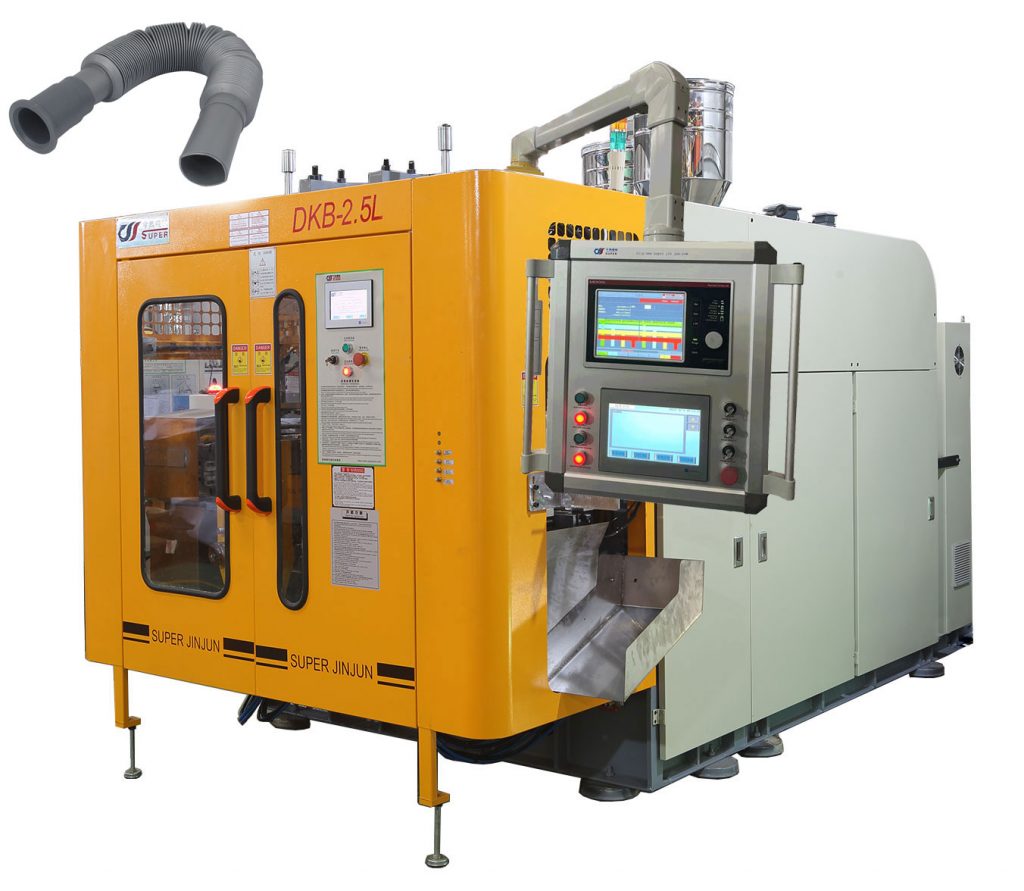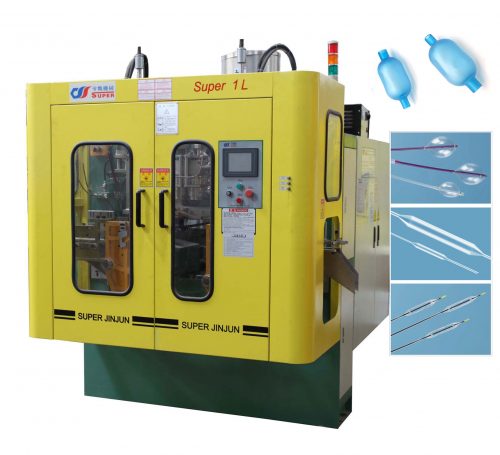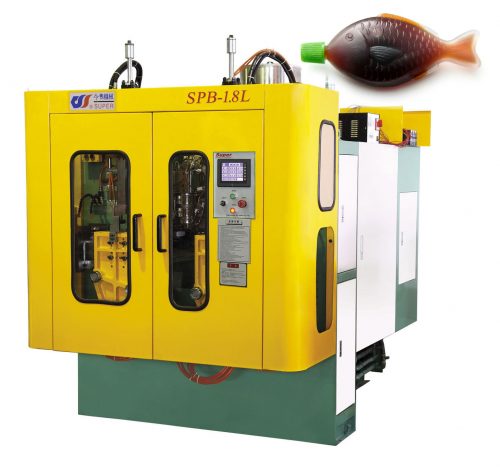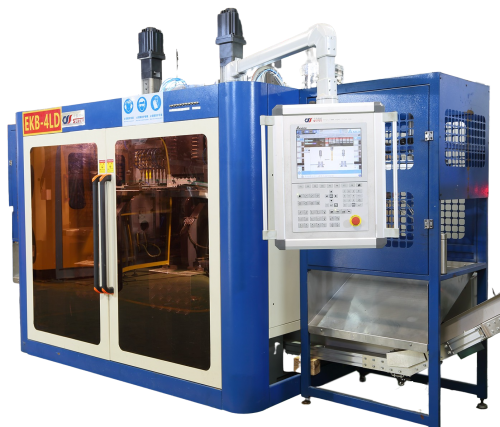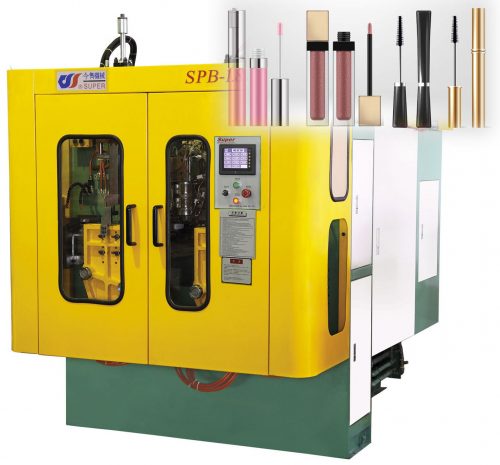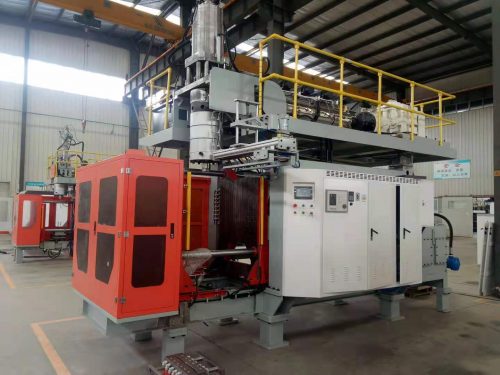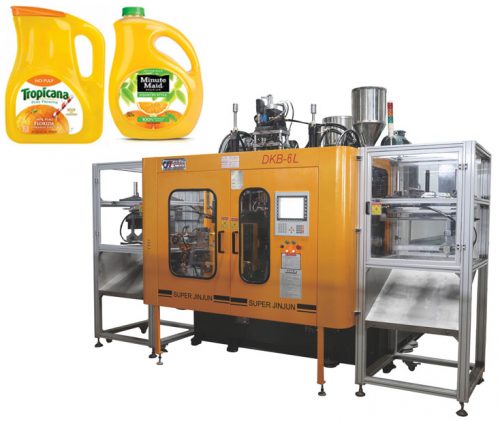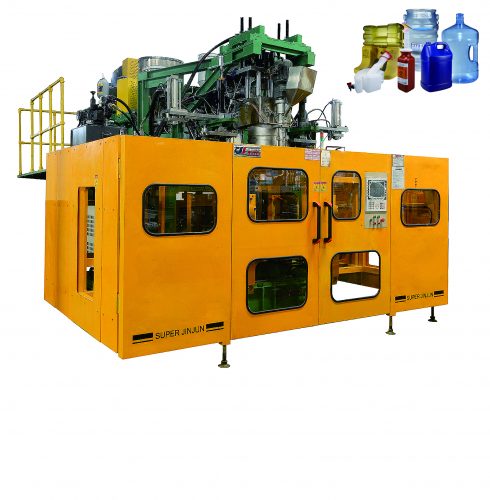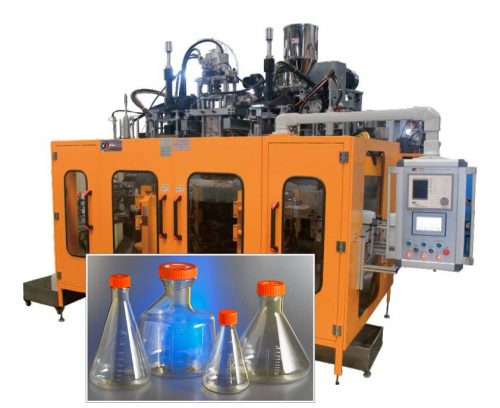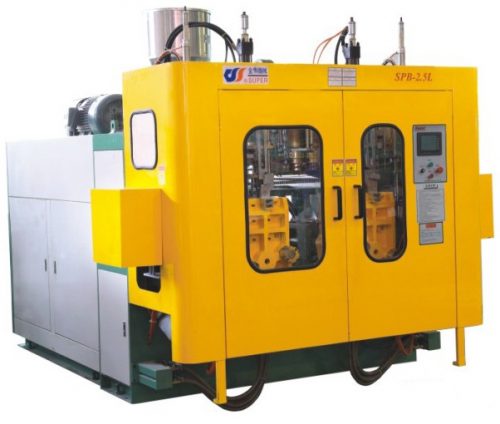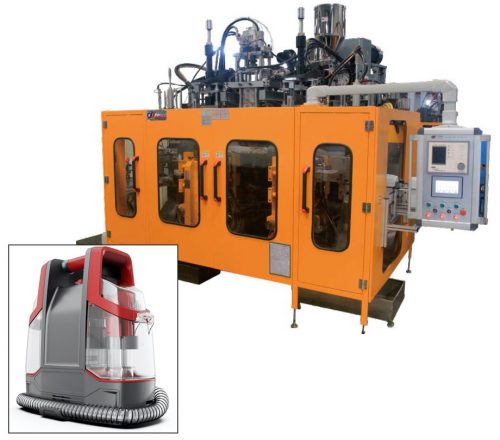Drain pipe bellows outlet hose blow molding machine
Drain pipe bellows outlet hose blow molding machine, Outlet hose is a flexible connection between washtub outlet and drain pump inlet in front-load washing machine.
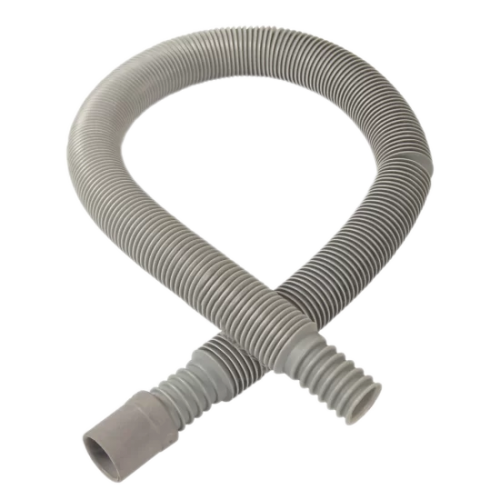
Outlet hose is a special bellows that there is outlet on both side of bellows and it is integrated.
The parameters of drain pipe bellows outlet hose blow molding machine:
| Screw Diameter | mm | 55 |
| Screw L/D Ratio | L/D | 24:1 |
| Extrusion motor | KW | 15 |
| Oil pressure motor | KW | 11 |
| Screw rotate speed | R.P.M | 10-75 |
| Screw heating zone | Parts | 4 |
| Heating power | KW | 18 |
| Parison motor option | KW | |
| Extruding Capacity HDPE | kg/h | Approx.70-75 |
| Mold Center Distance | mm | 60/80/90/120/130 |
| platen distance | mm | 150-450 |
| mold movement stroke | mm | 380 |
| Length range of mould | mm | 100-320 |
| Width range of mould | mm | 100-350 |
| Thickness range of mould | mm | 150-180 |
| Dry Circle time | s | 3.7 |
| Mold-locked pressure | Ton | 7 |
| Oil tank Volume | L | 200 |
| Air Pressure | kg/cm2 | 6-8 |
| Air Volume | m3/min | 0.6 |
| Cooling water pressure | mpa | 0.3-0.5 |
| Cooling water consumption | L/min | 50 |
| Min./Max. diameter of product | mm | 30-200 |
| Weight of product | g | 20-150 |
| Volume of product | L | 0.05-2 |
| Total power consumption | kw | 54 |
| Average power consumption | kw | Approx.21-30 |
| Net weight of machine | ton | 6.5 |
| Gross weight of Machine | ton | 6.7 |
| Machine dimension (L*W*H) | m3 | 3.8*1.9*2.5 |
Extrusion blow moulding is expected to show a process energy load somewhere in between injection moulding and extrusion. This is the case and typical data for an extrusion blow moulding site shows a base load of 25% of the average total energy use and a process load of 1.3259 kWh/kg. This is again generally representative of an extrusion blow moulding site that has not taken substantial energy management action.
The extrusion blow moulding site has a broadly similar base load (both in magnitude and in percentage terms) to the injection moulding and profile extrusion sites and the extrusion blow moulding site has a process load between that of extrusion and injection moulding.
Extrusion blow molding is recognizable by the hollow tube that is extruded from the machine to create the parts. This tube is referred to as a parison. A hollow mold then closes around the parison and cycles to the blow station. When at the blow station, the parison within the mold is molded through utilizing air pressure while another parison is being extruded from the machine. This allows for a quicker cycle time
Since the parison is required to hang freely during extrusion, a higher-molecular-weight polymer is required. High-density polyethylene (HDPE) is most often used within extrusion blow molding applications. Multiple heads can be used on an extrusion blow molding machine in order to create a greater output.
The two types of extrusion blow molding machines are the two-station machine and the continuous machine. A two-station, or “shuttle,” machine transfers a common mold back and forth between the extruding parison and the blow station. A continuous, or “wheel,” machine uses multiple, identical molds to continuously produce parts.
Extrusion blow molding can produce larger parts than injection blow molding. It is also less expensive, and there are no internal stresses within the part. However, more scrap is produced when using extrusion blow molding, and there is less control over the accuracy of the critical dimensions.
